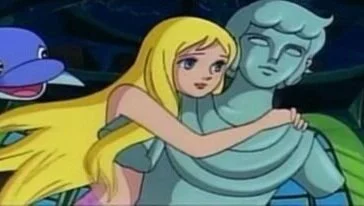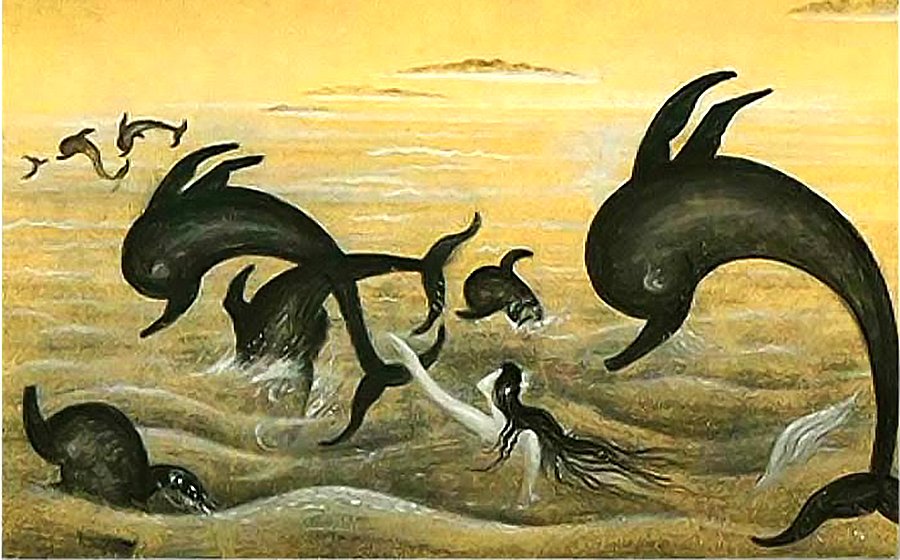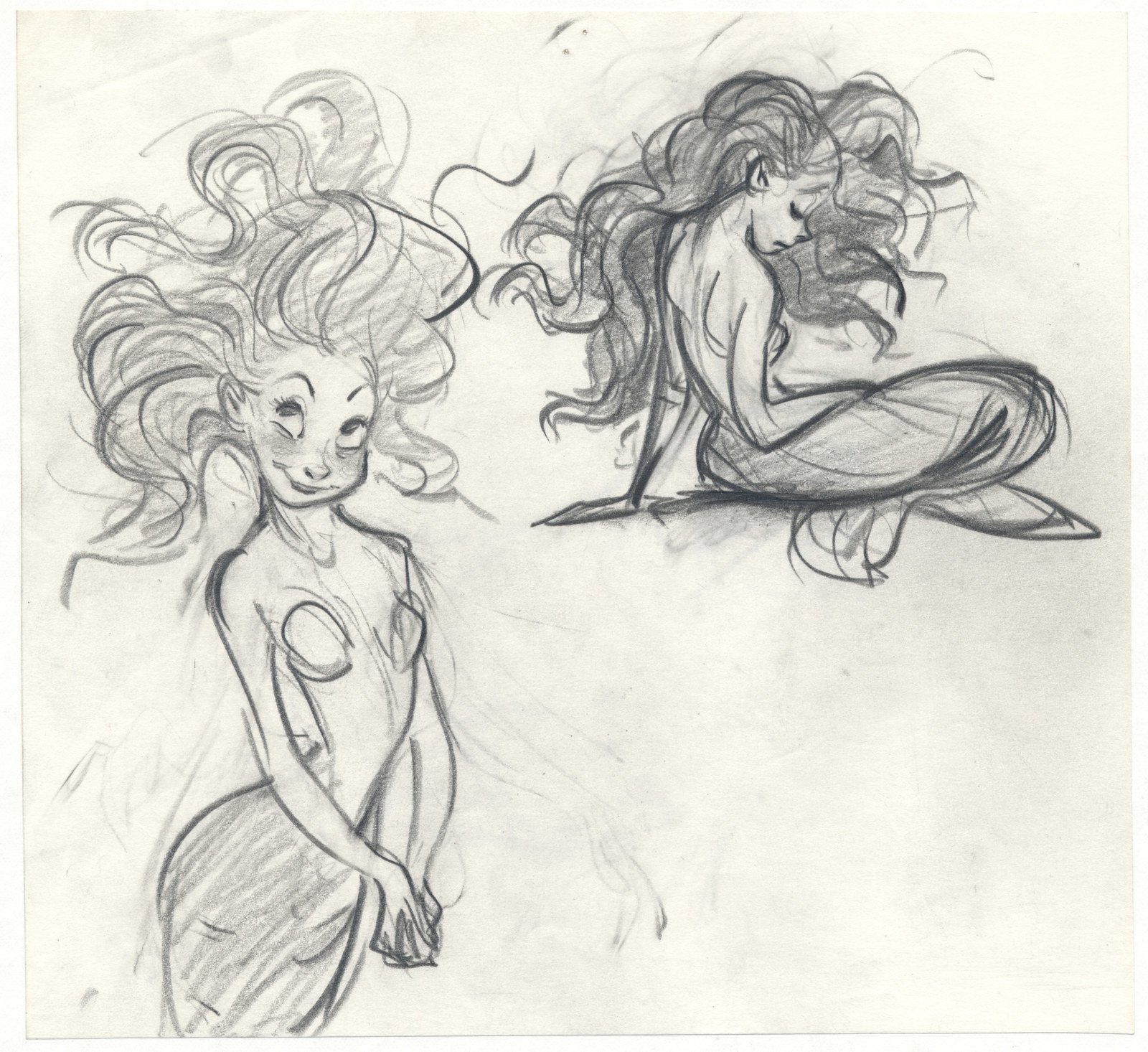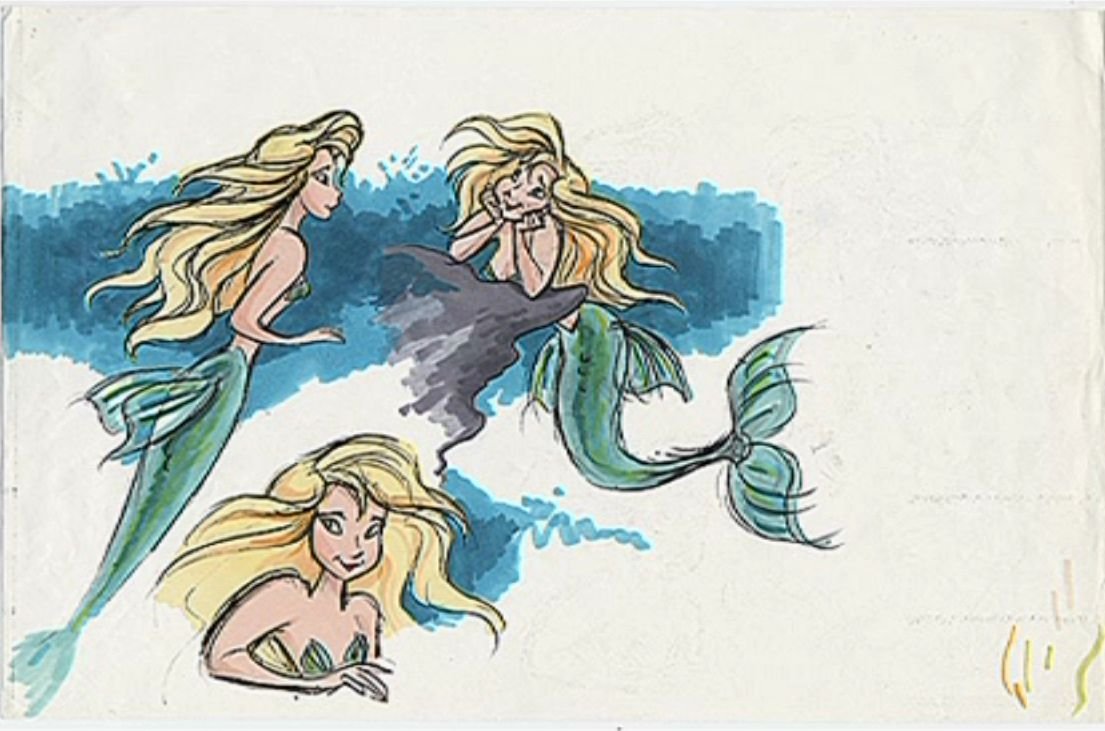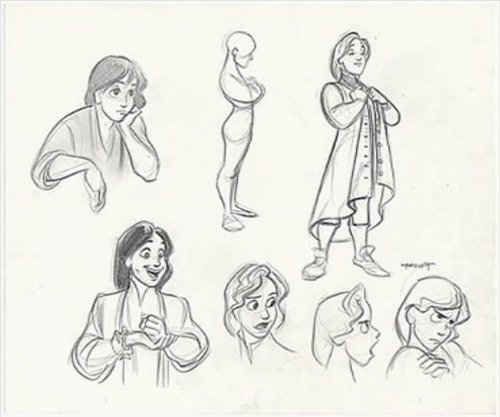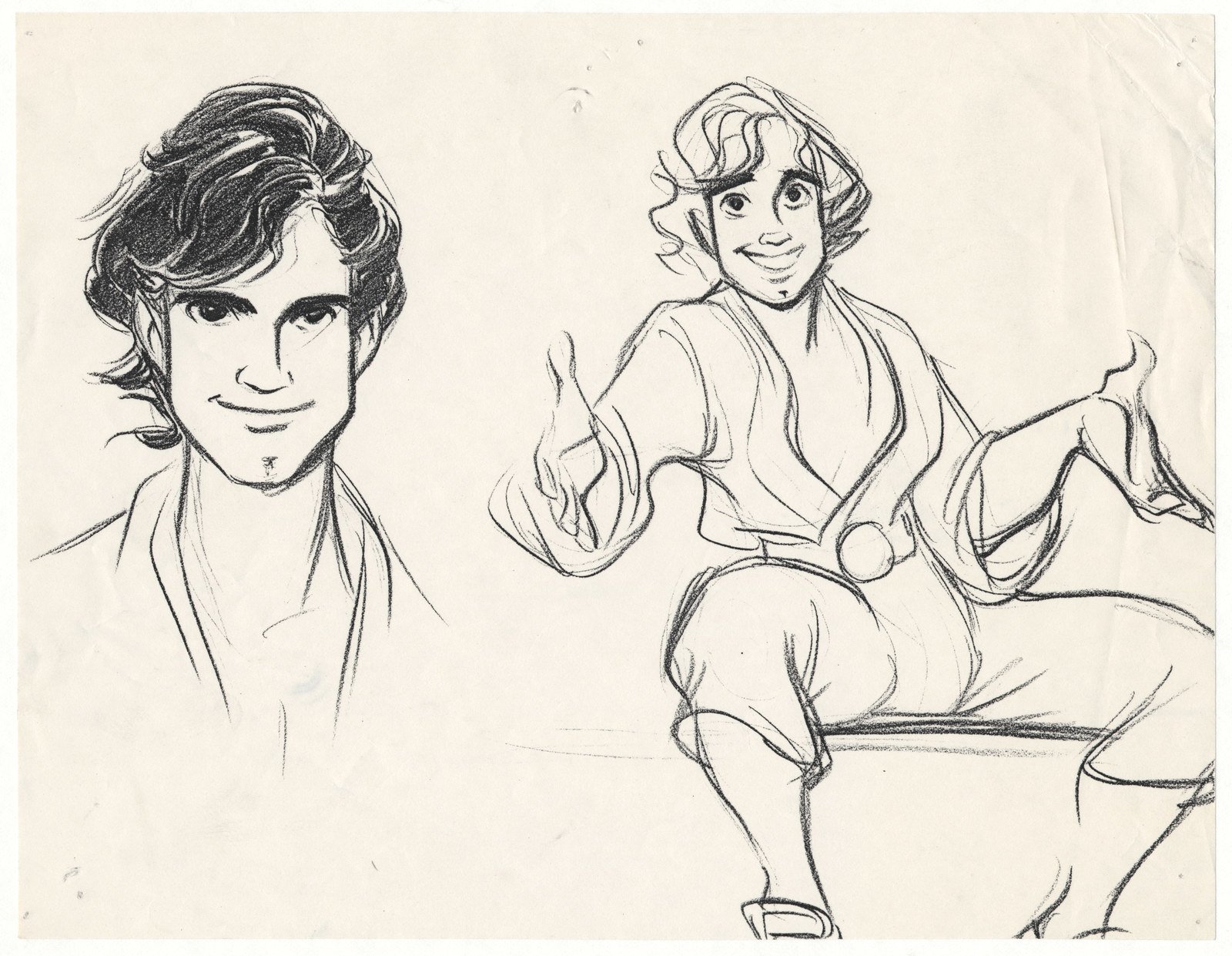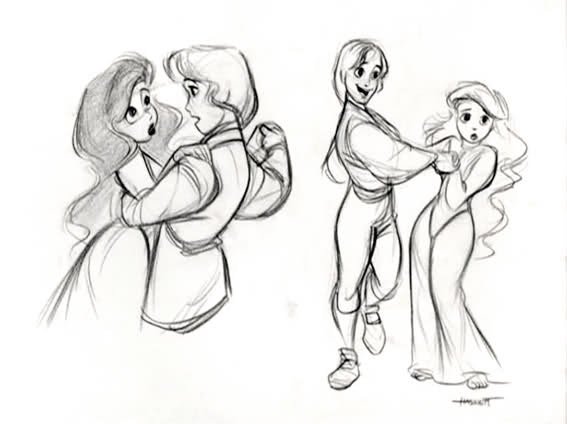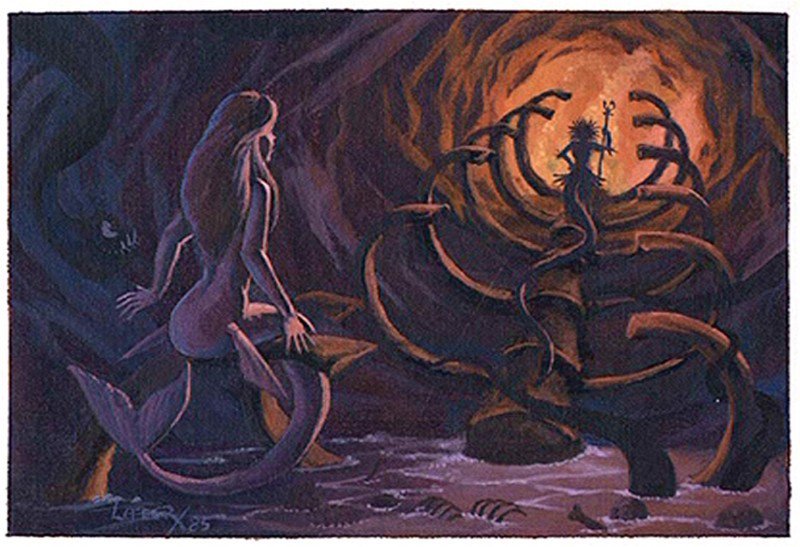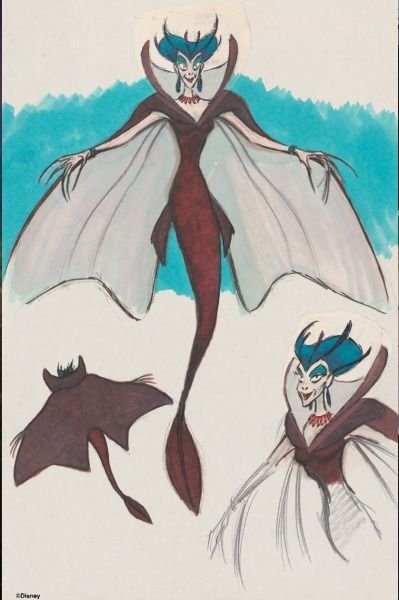The Little Mermaid - Japan vs Disney
We have a new Disney history video for you! Today we are diving into a really interesting…I guess you could call it a theory… It is something I noticed when watching different animated versions of the Little Mermaid. This theory centers around Disney’s 1989 Little Mermaid and surprisingly another film made more than a decade before it, an anime film known as Hans Christian Anderson’s Little Mermaid. The anime in particular was made in 1975, long before Disney’s version.
Yet, we noticed some similarities between the two.
Even just taking a look at the intro to the film and the choices made for each scene…they look so like each other and it’s not just because they are underwater tales about mermaids. The Disney film has some focal points that reflect the Japanese one and you’ll see it even more throughout our discussion. We’ll look at both movies, especially the development of the Disney version and you know… I have to show you some of these similar scenes.
History
Now, we want to start this off with a reminder that this is just a theory, if you can even call it that. Some of you may know I have an education as a historian and I would never claim something without full backing by credible sources. The fact is that I have yet to find a distinct tie between the two movies, but I do think that there are some glaring resemblances. I don’t want to force an opinion or imply anything. So, it doesn’t hurt to just look at them objectively and throw some Disney history in there too! You know I have to.
Japanese Version
With that said, let’s quickly look at the Japanese anime. It follows the story of Han Christian Anderson’s much more closely than the Disney version without most of the morbid and gruesome parts. The main character here is named Marina and she is followed closely by her friend, Fritz. Kind of similar to Ariel’s friend, Flounder. The story follows pretty closely to what we know as the tale until the end.
Now, many people who have an issue with the Disney version say it is because Ariel acts pretty rebelliously and rashly without any consequences. Actually, she gets exactly what she wants in the end.
That’s not the case here. At the end of the movie, Marina cannot convince the prince that the raven-haired girl is not the one who saved him from the sea. Through some sacrifice from her sisters, Marina receives a dagger with the instructions to kill the prince which will then return her to her mermaid form and she can live again in the sea. Marina almost chooses to do just that, but ultimately she can’t bring herself to do it. Instead, she decides to wait for sunrise and the end of the sea witch’s spell where she will turn into sea foam per the conditions of the spell. Of course, right before she does so, the prince wakes up and pieces together that she was the girl who saved him from the storm. But it is too late. Much darker than Disney, right??
Disney
Let’s look at how Disney came to creating their Little Mermaid.
Way back somewhat at the start of the Disney company’s start in animation, Walt Disney had actually planned to do Little Mermaid as Fantasia-esque series. They had discussed some of the story together, putting a light framework around what they intended to create. They actually had Kay Neilson, the same artist behind the Night on Bald Mountain sequence, create some concept art for the segment. Nielson had a unique style that gave quite a lot of notable ideas to the project. You can see a lot of the vision here with the mermaid looking on to the palace and the ship. Ron Clements, co-director of the film said they looked to this especially for the storm sequence for their film. This early project ended up on the back burner for years to come.
Years later in the 1980s, we find an almost obsolete animation department at Disney. That’s right. Animation had actually been pushed off the main lot to warehouses. Executives were even considering cutting out the whole department. One could say much of the public wouldn’t have even wanted to be caught dead watching a Disney movie. A studio that had been founded on animation with Snow White was now considered irrelevant and undesirable.
In the mid 80s, Disney brought in many new faces to help revive their films. I really could do a whole other video just about that time, but I’m going to skip over that for now to get to the actual development of this movie.
Summing everything up, the new heads of the animation department started what they called “gong shows.” Ron Clements explained these “gong shows” as ones where employees would pitch three different story ideas and they would either get approved or declined. He came across the fairytale of The Little Mermaid and wrote a treatment for his own version of the story. It got approved and they were off to start developing it!
You might think that the story was secure at that point, but actually there was more to it. Disney had just released the film, Splash with Tom Hanks and Daryl Hannah. Jeffery Katzenberg believed that they shouldn’t release two mermaid movies back to back. So, the film was shelved. Well, Katzenberg called it back the very next day after reconsidering it and the impact of the story. However, he had somewhat of a “condition” that he did not think the mermaid she have red hair like Ron Clements had imagined and pitched it.
Well, we all know how that story ended up.
Concept Art
So, let’s look at some of concept art at the beginning of the development for the 1989 film, starting with Ariel. Most of the concept art actually has her in a pretty similar light. Some slight differences happen over the course of time, but it isn’t anything major. Glen Keane actually took on her animation fairly early in the process because he had such a clear vision for how he wanted to animate the character. He worked closely with the live action actors to achieve that look in a believable and relatable way. The final product set Ariel apart from any animated character.
Time to move on to Prince Eric. In my opinion, the earliest versions had much less personality. It really is a very basic, young prince and honestly similar to the Japanese version. I mean they even used the sunken statue to reveal to the little mermaid as a way for her to kind of see him for the first time. Anyway, progressively the design got closer to the character that we know now.
From there, we move on to the sea witch….or the character Disney called Ursula. In both films, the little mermaid goes into the sea witch’s lair and meets her alone. So, you kind of get this grand entrance and encounter with the villain. Now, in the Japanese anime she almost looks like an enormous sting ray. That’s really the best I can describe it. She also has some elegant, but also very pointed, features in her face. She is just the huge, sweeping creature!
Disney had a completely different take on this sea witch, but it came through iteration after iteration. It started off with something comparable—big wing-like features out to the side, one tail somewhat like a mermaid, pointed features. But then it morphed into a little larger, with more tentacles where she actually took on more of a squid form. Many of the animators actually watched live footage of octopi in order to watch their movements and make Ursula naturally dance during the “Poor Unfortunate Souls” sequence. Clever, huh?
Overall Similarities
This is the perfect time to segue into some of the overall similarities between the two films. The good stuff! I mentioned before how the endings between the two stories were very different. The transformation of the Ariel and Marina between mermaid to human had a different execution but some similar imagery in the scenes.
In the Disney production, Ariel transforms completely during Ursula’s song, another genius work from Howard Ashman that so much story happens during the songs. The point though, Ariel gets her legs while still underwater.
For Marina, the sea witch gave her a potion to drink, should she decide to go through with the plan. She swims up to the shore and drinks the potion, immediately gaining her legs. The prince finds her on the beach and you’ll notice a few points of view that look alike.
Overall, there are just multiple moments where the scenes look so incredibly similar and it isn’t just because the movies are driven by the same story. They are really close. The storm scene is possibly the most prominent to me. Which makes me wonder just a little if the company behind the Japanese film may have seen some of Kay Nielson’s work. Totally just a speculation though! It is just a thought. Anyway, take a look at some of the rest of these and see what you think!
There’s no denying that some of these scenes are incredibly similar. Again, I have no direct connections or proof of how to why for this. It is interesting to note though and I hope you enjoyed this comparison between the two. Perhaps it will even prompt you to watch the anime version. I mean, you’ve got to experience the tragedy that is Hans Christian Anderson’s story. It sure is nothing like Disney’s ending. But hey, we do love a good happy ending!
Thanks for watching, guys. And we will see you on the flip flop.


